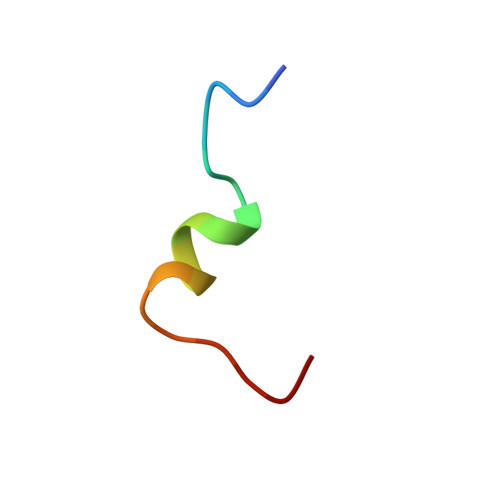Structural Characterization of the DAXX N-Terminal Helical Bundle Domain and Its Complex with Rassf1C.
Escobar-Cabrera, E., Lau, D.K., Giovinazzi, S., Ishov, A.M., McIntosh, L.P.(2010) Structure 18: 1642-1653
- PubMed: 21134643
- DOI: https://doi.org/10.1016/j.str.2010.09.016
- Primary Citation of Related Structures:
2KZS, 2KZU - PubMed Abstract:
DAXX is a scaffold protein with diverse roles including transcription and cell cycle regulation. Using NMR spectroscopy, we demonstrate that the C-terminal half of DAXX is intrinsically disordered, whereas a folded domain is present near its N terminus. This domain forms a left-handed four-helix bundle (H1, H2, H4, H5). However, due to a crossover helix (H3), this topology differs from that of the Sin3 PAH domain, which to date has been used as a model for DAXX. The N-terminal residues of the tumor suppressor Rassf1C fold into an amphipathic α helix upon binding this DAXX domain via a shallow cleft along the flexible helices H2 and H5 (K(D) ∼60 μM). Based on a proposed DAXX recognition motif as hydrophobic residues preceded by negatively charged groups, we found that peptide models of p53 and Mdm2 also bound the helical bundle. These data provide a structural foundation for understanding the diverse functions of DAXX.
- Department of Biochemistry and Molecular Biology, University of British Columbia, Vancouver, BC V6T1Z3, Canada.
Organizational Affiliation:

















